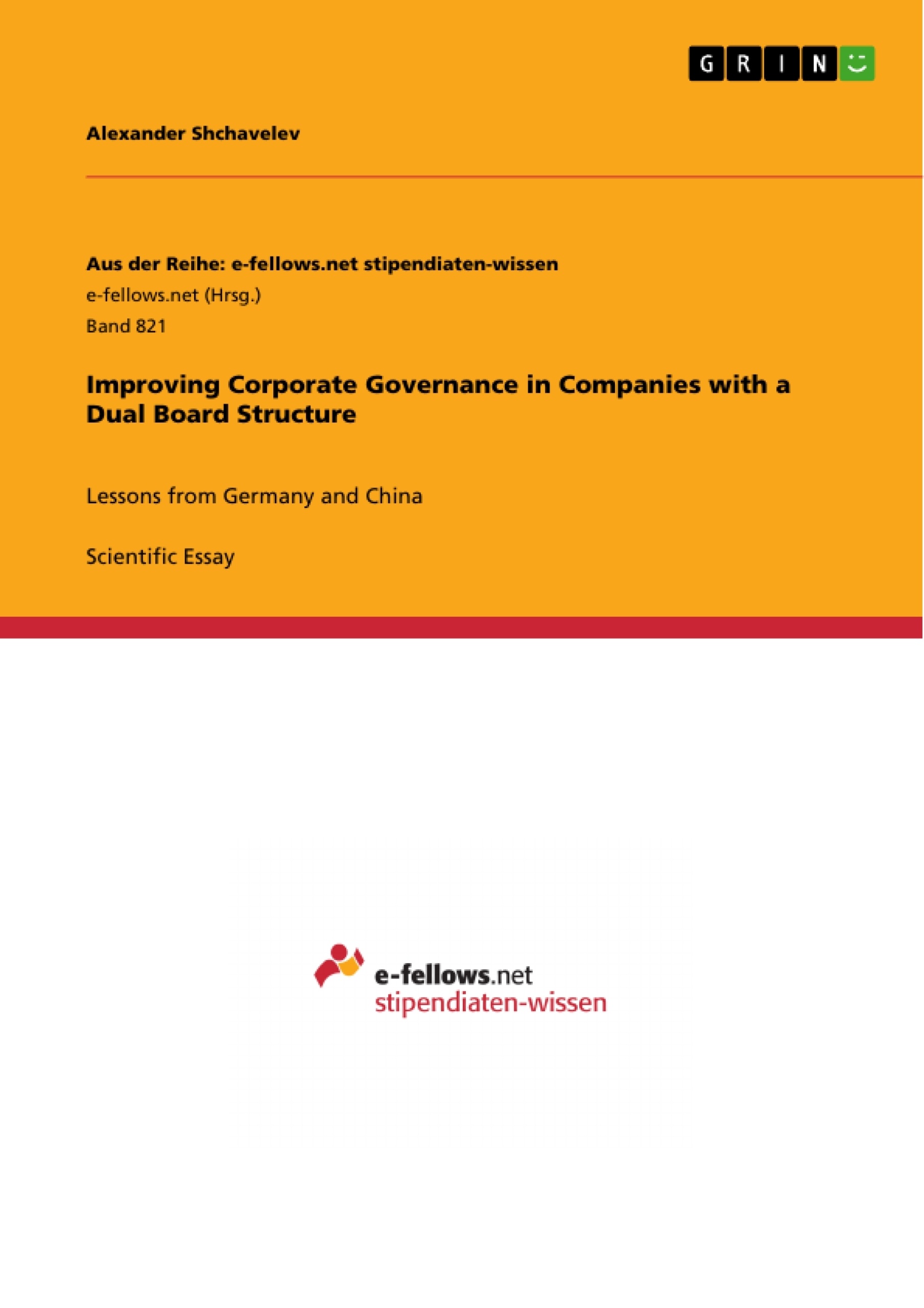Effective monitoring structure within a company is one major concern of corporate govern-ance. Both China and Germany adopt a two-tier board structure and have experienced similar considerable difficulties regarding the efficacy of the supervisory boards. This paper focuses on the different ways in which both countries addressed this problem. It is argued that there has been no need for China to adopt a parallel system of independent directors. Rather, China should have followed the German way and professionalized its supervisory boards.
Inhaltsverzeichnis (Table of Contents)
- Abstract
- I. Introduction
- II. Internal governance structure of companies
- 1. Germany
- 2. China
- III. Supervisory concerns and reforms
- 1. Germany
- 2. China
- IV. Comparison and assessment
- 1. The notion of independent director
- 2. The role of the supervisory board
- 3. The role of the management board
- 4. The role of the shareholders
- 5. The role of the state
- 6. Cultural obstacles
- V. Conclusion
Zielsetzung und Themenschwerpunkte (Objectives and Key Themes)
This research essay explores the effectiveness of corporate governance in companies with a dual board structure, focusing on the experiences of China and Germany. The essay aims to understand how both countries have addressed challenges related to the efficiency of supervisory boards and to assess the effectiveness of different reform approaches.- Comparison of corporate governance structures in China and Germany
- Analysis of the role of supervisory boards in both countries
- Evaluation of the effectiveness of different reforms
- Exploration of the impact of cultural factors on corporate governance
- Discussion of the potential benefits and drawbacks of independent directors
Zusammenfassung der Kapitel (Chapter Summaries)
- I. Introduction: This chapter introduces the concept of corporate governance and the focus of the essay on the control aspect in China and Germany. It highlights the challenges both countries have faced with the two-tier board system and the contrasting reform approaches.
- II. Internal governance structure of companies: This chapter delves into the internal governance structures of companies in Germany and China. It examines the different types of companies, the roles of their respective bodies (management board, supervisory board, and shareholders' meeting), and the powers vested in each body.
- III. Supervisory concerns and reforms: This chapter explores the concerns that arose regarding the effectiveness of supervisory boards in both Germany and China. It details the reforms implemented in each country, including the expansion of the supervisory board's duties and rights in Germany and the efforts to address the issue of concentrated ownership and insider control in China.
- IV. Comparison and assessment: This chapter compares and assesses the different approaches taken by Germany and China to improve corporate governance. It examines the concept of independent directors, the role of the supervisory board, the management board, shareholders, the state, and the influence of cultural factors on corporate governance practices.
Schlüsselwörter (Keywords)
This research essay focuses on corporate governance, dual board structure, supervisory boards, management boards, shareholders, state, China, Germany, independent directors, reforms, cultural obstacles, and comparative analysis.
Excerpt out of 11 pages
- scroll top
- Quote paper
- Dr. Alexander Shchavelev (Author), 2012, Improving Corporate Governance in Companies with a Dual Board Structure, Munich, GRIN Verlag, https://www.grin.com/document/262676




